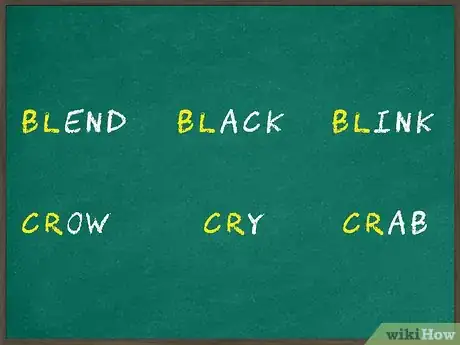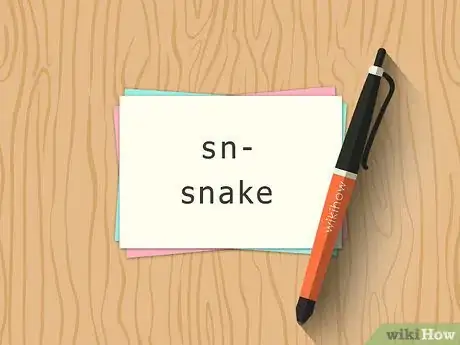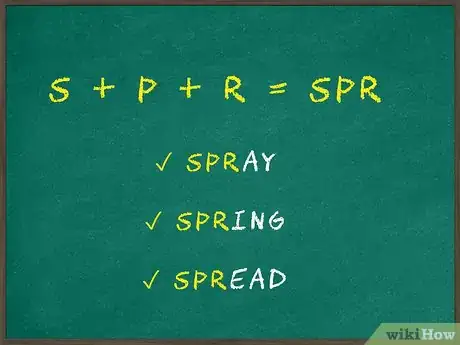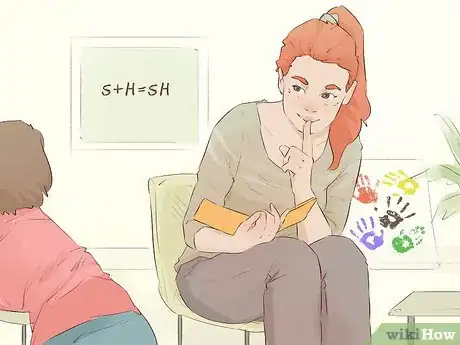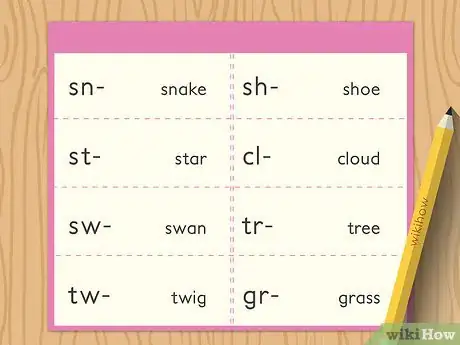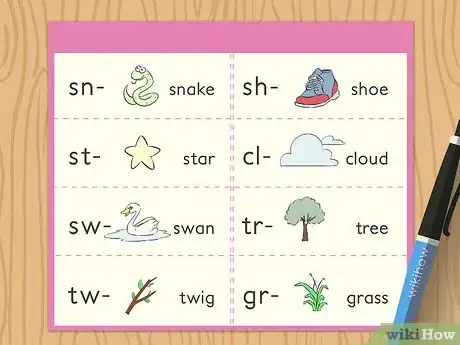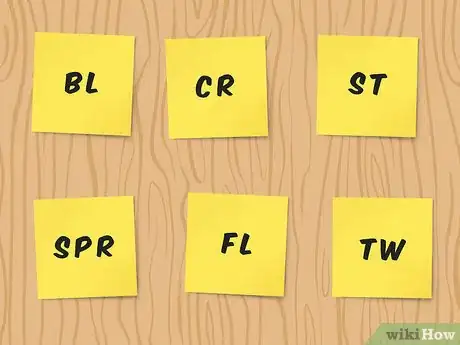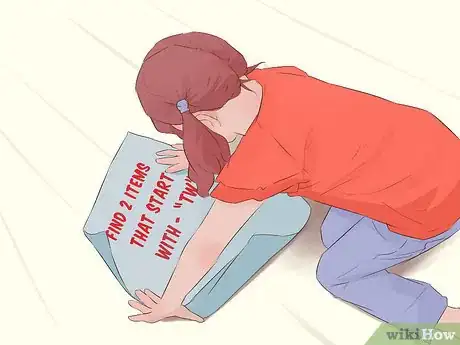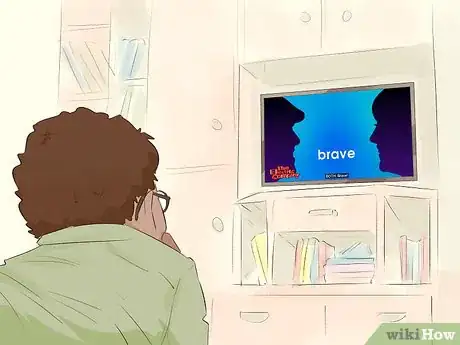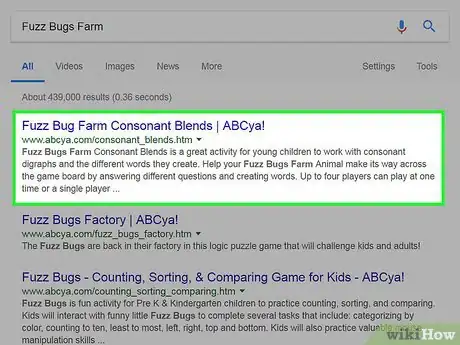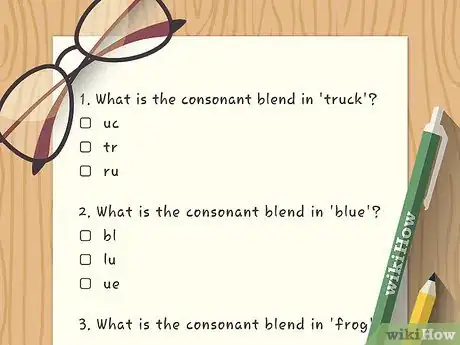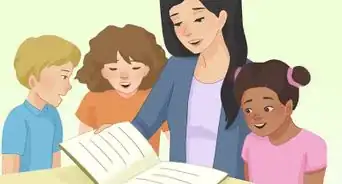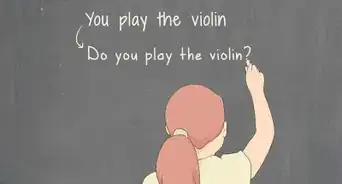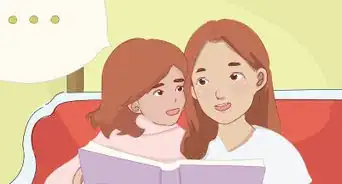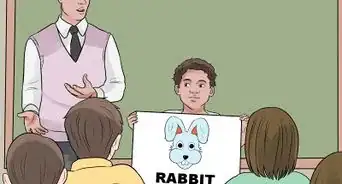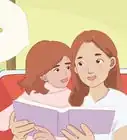This article was co-authored by Alexander Peterman, MA. Alexander Peterman is a Private Tutor in Florida. He received his MA in Education from the University of Florida in 2017.
wikiHow marks an article as reader-approved once it receives enough positive feedback. In this case, 98% of readers who voted found the article helpful, earning it our reader-approved status.
This article has been viewed 27,865 times.
Understanding consonant blends is an important part of learning to read. Teaching young kids consonant blends may seem daunting, but you can actually have lots of fun with it! You’ll want to start with basic phonics. Focus on teaching consonant blends, which are clusters of 2 or 3 consonants that make a distinct sound and are the foundations of many words. You can start with some simple techniques to help students grasp blends. You can also get creative by adding in visual aids and using simple games to make learning fun.
Steps
Starting with the Basics
-
1Start with 2 letter blends that begin words. Explain to students that 2 consonants together in 1 word make up a blend. These blends typically make a distinct sound. Choose several 2 letter blends to demonstrate what you’re talking about, and show multiple examples for each blend.[1]
- On the board, write out several common blends and a word that goes along with them. For example, you could write “bl” and “blend,” “black,” “blink,” or “cr” and “crow,” “cry,” and “crab.”
- After you show several examples, ask students to help you come up with a word for each blend. Create a game out of it so your students are excited to think up new examples.
- If your students have a hard time thinking of new examples, provide hints about words you have in mind, such as visual cues.
-
2Use blending maths to teach these blends. Write the letters of the blend in the form of an equation. For example, “c+l = cl”. Read the equation out loud to students. Make sure to say the sounds of the letters instead of the names, so that students can hear what the blend sounds like in a word.[2]
- Your students should know basic consonant sounds before moving on to blends. Remind them about the difference between hard and soft "c", and explain that when "c" is before "l", it will be hard. If they are having trouble, fully review consonant sounds before teaching blends.
- Students usually have an easier time starting with blends that begin words. Start with those, and work your way up to blends found at the end of words.
Advertisement -
3Practice the concept with flashcards. Flashcards can be helpful for demonstrating how the letters evolve from a blend into a complete word. Some flashcards show the consonant blend in a different color from the rest of the letters in the word. Other flashcards only have the consonant blends on them. Some have a picture and a selection of blends so students can choose the blend that matches the picture.
- You can purchase consonant blend flashcards online or make your own.
-
4Continue using blending maths to teach 3 letter blends. Once your students grasp 2 letter blends, you can use the same approach for 3 letter blends. This may be easier for your students to grasp if you start with the sounds instead of the letters. Then, list some common blends and corresponding words before moving on to equations. Remember to read the letters as sounds. You might use:[3]
- s+t+ r = str
- s+p+r = spr
-
5Use sounds for difficult blends. Some blends don’t sound like the 2 or 3 letters blended together. For instance, “ch” doesn’t really sound like the letter c+h. It’s helpful to teach these blends using distinctive sounds. [4]
- For example, you could demonstrate “ch” by pretend sneezing and making an “achoo” noise. You could say “Shhh” as in “be quiet” to teach the “sh” blend.
Trying Visual Aids
-
1Draw a chart of different blends. Create a chart to put up in your classroom. Add several common blends and a corresponding word. Being able to look at the blends will help students retain what they’ve learned. You can also reference it during reading lessons.[5]
- Make a space on your chart for many common blends like “tr,” “fl,” and “gr,”.
- You may want to include consonant blends that occur at the ends of words as well, like “ck,” “rd,” and “sp.”
-
2Add stickers or drawings to illustrate each blend. Making your chart more visually appealing will ensure that your students look at it more closely and more often. For each blend and word combination, add a drawing or sticker. For example, add a strawberry sticker for the “str” blend. You could draw a picture of cash for the “sh” blend. Use your imagination! [6]
-
3Have students create their own illustrated board. You can make this an interactive learning experience. Assign each student, pair, or group a blend and have them come up with a corresponding word. Then, have them draw or paint a picture that represents that word. [7]
- You could also have them cut pictures out of magazines to use as illustrations.
Playing Games and Showing Videos to Help Students Learn
-
1Make memory cards using different blends. You can make your own game of memory to help students engage with this lesson. You can make game cards out of notecards, post-its or any material you like. Write a consonant blend on the back of each card and place them face down. Let students take turns choosing a card and coming up with a corresponding word for each blend.[8]
-
2Plan a scavenger hunt where students find words for each blend. You can play this game with your set of memory cards. Give each student a handful of cards. Have them go around your classroom and find items that go with each blend. [9]
- For example, they might collect scissors to go with “sc” or a chair to go with “ch”.
- This activity may be most effective for small classes.
-
3Show fun videos about blends. There are lots of free educational videos that can help you teach blends. You can search educational websites to find the ones that you like the best. For example, the PBS learning site has a great variety! [10]
- Choose videos that are short enough to hold young students’ interest.
- Discuss the video after watching. This will help students retain the information.
-
4Use educational computer games to teach blends. Technology offers a lot of great ways to make learning fun for kids. There are many free computer games that help students learn blends in a fun way. Let each student take a turn playing, either alone or in small groups.[11]
- Run a Google search to find games, or head straight for a tried and true one like Fuzz Bugs Farm.
-
5Create quizzes to test your students’ knowledge. Sites like “Kahoot” allow teachers to make their own quizzes tailored to lesson plans and their students’ learning levels. You can create a quiz and then allow your class to take it together, selecting the answer that the majority thinks is correct.
- This may also help you identify students that are having trouble grasping the concept of consonant blends.
References
- ↑ https://www.phonics-literacy.com/consonant-blends.html
- ↑ https://www.phonics-literacy.com/consonant-blends.html
- ↑ https://www.phonics-literacy.com/consonant-blends.html
- ↑ https://www.phonics-literacy.com/consonant-blends.html
- ↑ https://www.phonics-literacy.com/consonant-blends.html
- ↑ https://www.phonics-literacy.com/consonant-blends.html
- ↑ https://www.weareteachers.com/20-anchor-charts-to-teach-phonics-and-blends/
- ↑ https://www.phonics-literacy.com/consonant-blends.html
- ↑ https://www.education.com/activity/article/Blend_Scavenger_Hunt/
